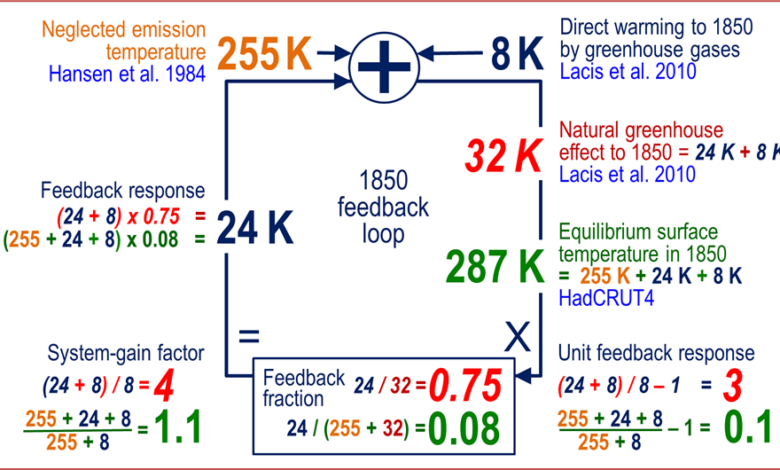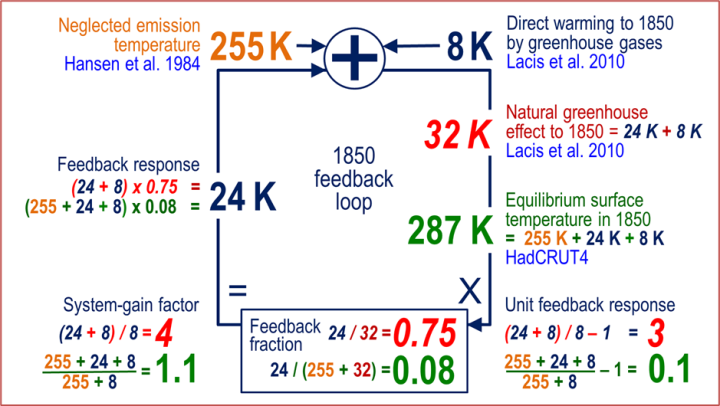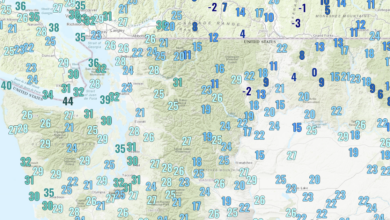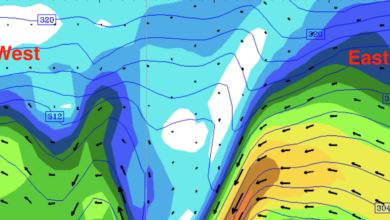Your Questions Answered – Watts Up With That?

By Christopher Monckton of Brenchley
Regular readers of WUWT will know that some years ago my team of eminent climatologists and control theorists discovered that, remarkably, climatology had – at a vital point in its calculations of how much warming we may cause – forgotten that the Sun was shining.

Climatologists’ error arose from interdisciplinary compartmentalization. They borrowed feedback math from control theory, a mature branch of engineering physics, but without understanding what they had borrowed.
Their error was so large that, after correction, the near-certainty of future global warming large enough to be catastrophic vanishes, and the tawdry notion of “climate emergency” with it.
The climate activists hate our result not because it is wrong but because it is right. To coin a phrase, it is an inconvenient truth. They have been working overtime to try to suppress it, not least by writing inept, inaccurate, ignorant, intemperate or inspissate comments about it in the discussion threads here.
Likewise, the unlearned journals of climate “science” are doing their level worst to keep our paper from being properly peer-reviewed, let alone published. The journal to which we most recently sent it – well over a year ago – advertises that its average time from submission to decision is less than three months. We have been waiting four or five times longer than that.
One makes some allowance for the general chaos caused by the Chinese virus. However, the pandemic has now become endemic, so it is time for the journals to get on with their work. Yet a recent polite reminder to the editor of the journal has gone altogether unanswered. That, to say the least, is discourteous and unprofessional. It will be for the courts, in due course, to decide whether it is also corrupt.
Gary Pearse, in a comment on my recent posting about the lengthening of the new Pause to seven and a half years, where I explained some aspects of our research, wrote:
Christopher this is a jewel of an explanation of your thesis and I wish others could find such a touchstone for their technical criticisms of other aspects of the scam. I am an engineer, so had no trouble understanding the idea as originally presented, but the vast majority do not understand. These are the people we do not reach!
In this posting, I shall try to do as Gary suggests and reach the people we do not reach. I shall not succeed in reaching all of them. Some are determined not to be reached, regardless of the mere truth.
I propose to answer some of the questions that have been raised about our result. But feedback theory is not easy. If you are not technically minded, you may struggle here and there. However, I shall do my best to keep everything to simple arithmetic, and to explain necessary concepts as I go.
How can you prove that climatology forgot the Sun was shining?
One of the earliest methods of estimating equilibrium doubled-CO2 sensitivity (ECS) – the warming eventually caused by a radiative forcing equivalent to doubling the CO2 in the air – was to look at what happened in 1850, before we had greatly influenced global temperature, which was then at equilibrium: thereafter, there would be no trend in global warming for 80 years.
In 1984 James Hansen at NASA, followed by Michael Schlesinger in 1988, Lacis (again at NASA) in 2010 and 2013 and countless others, carried out the following crude calculation.
Direct warming by the naturally-occurring, noncondensing greenhouse gases up to 1850 was about 8 K. But the total natural greenhouse effect was 32 K. It was the difference between the 287 K global mean surface temperature in 1850 and the 255 K emission temperature that would prevail near the surface if there were no greenhouse gases in the air at all at the outset, simply because the Sun is shining.
The 24 K difference between the 32 K natural greenhouse effect and the 8 K reference sensitivity to preindustrial greenhouse gases was temperature feedback response.
Feedback response is an additional warming chiefly driven by more water vapor, the condensing greenhouse gas, in warmer air. It is dependent upon and proportional to the direct temperature that engendered it.
Therefore, Hansen, Schlesinger, Lacis and many, many others imagined that the system-gain factor – the ratio of final or equilibrium warming after accounting for feedback response to direct or reference warming before accounting for it – must be about 32 / 8, or 4.
Wrong.
Direct warming by doubled CO2 (called reference doubled-CO2 sensitivity, or RCS) is 1 K. Climatology implicitly assumes (with good reason, as it turns out) that the system-gain factor today is very much as it was in 1850. Then, on the basis that the system-gain factor in 1850 was 32 / 8, or 4, it assumes the final warming by doubled CO2 (the equilibrium sensitivity or ECS), is likely to be 4 K.
Also wrong.
ECS of 4 K was the conclusion in Hansen (1984), and it remains climatology’s conclusion today: the mean midrange ECS projected by the CMIP6 models is 3.9 K (Zelinka et al 2020 supp.).
Yet, as my monthly postings on the latest of many Pauses in global temperature illustrate, the actual rate of global warming is a lot less than had originally been predicted. Astonishingly, the chief reason for climatology’s extravagant over-predictions of warming and of consequent Thermageddon is that Hansen and so many others after him had simply forgotten that the Sun is shining.
At any given moment – such as 1850 – the feedback processes then subsisting must perforce respond equally to each degree of the entire reference temperature, which, in 1850, was the 263 K sum of the 255 K emission or sunshine temperature and the 8 K reference sensitivity.
Therefore, those feedback processes must, at that moment, respond in strict proportion to the magnitude of each component in reference temperature, specifically including emission temperature, and not only to the 8 K reference sensitivity to preindustrial noncondensing greenhouse gases.
As will be explained later, this requirement of strict proportionality does not in any degree imply that the system-gain factor must be constant throughout the industrial era: i.e., that the system is in this respect linear in its behavior.
However, climatologists, in doing their rinky-dink 32 / 8 = 4 calculation, overlook the very large feedback response to emission temperature. In effect, they add it to, and miscount it as though it were part of, the actually minuscule feedback response to direct warming by greenhouse gases. Here, for instance, is Hansen (1984):
“Our 3D global climate model yields a warming of for either a
increase of [solar irradiance] or doubled CO2. This indicates a net [system-gain factor] of …
–
.”
Hansen goes on to say that emission temperature is 255 K and that today’s temperature is 288 K, from which the current 33 K greenhouse effect follows.
The system-gain factor for 1850, derivable from the quite well-constrained data for 1850, must be – but is not – applied not only to the 8 K reference sensitivity to greenhouse gases but also to the feedback response to the 255 K emission temperature itself.
The system-gain factor in 1850 was not 32 / 8 = 4 but rather (255 + 32) / (255 + 8) = 1.09. In that simple correction, about which the trolls have been meticulously and cravenly silent, the sheer magnitude of climatology’s error can be discerned.
Since RCS is just over 1 K, ECS is not the 4 K imagined by Hansen and still imagined today by most of the CMIP6 models: it is a harmless and net-beneficial 1.1-1.2 K. End of climate “emergency”.
If, therefore, climatologists had remembered that the Sun is shining, they would have realized that, since the 255 K emission temperature is about 30 times the 8 K reference sensitivity to preindustrial noncondensing greenhouse gases, very nearly all of the 24 K feedback response that climatology attributes to greenhouse gases – in fact, about 23.3 K of it – is in reality attributable to the fact that the Sun is shining (except in Scotland). Only 0.7 K is feedback response to the preindustrial noncondensing greenhouse gases.
There is no doubt about this result for 1850. Hansen, Schlesinger, Lacis and many, many others, including me in my first peer-reviewed paper on climate sensitivity, made the very same mistake. We were all simply wrong. There are no two ways about it. Oops!
I had made the mistake because I had asked Sir John Houghton, then IPCC’s science chairman, why climatology imagined that, contrary to common sense, feedback response was not just greater than the reference sensitivity that engendered it but three times greater.
Sir John had replied that in 1850 the feedback response to the 8 K direct warming by preindustrial noncondensing greenhouse gases was 24 K, so that the natural greenhouse effect was 32 K, whereupon the system-gain factor was 32 / 8, or 4, so that ECS, then as now, was 3-4 times the 1 K RCS.
Sir John was wrong. So wrong, in fact, that although IPCC (2013) mentions “feedback” some 1100 times, in today’s conditions – without significant error – one may ignore feedback response altogether when deriving ECS. For ECS is not, after all, three or four times RCS. It is about the same.
What is the effect of data uncertainties on our result?
Using the corrected method, the ±15 K uncertainty in emission temperature and the ±10% uncertainty in natural and anthropogenic reference sensitivities (the latter from Cess et al. 1993) make practically no difference: ECS based on the data for 1850 is constrained to 1.1-1.2 K. However, forgetting the sunshine and using the erroneous method, ECS for 1850 may be anywhere from 2-6 K.
How can it be that, after correction of climatology’s control-theoretic error, a system-gain factor just 1% greater today than in 1850 would entail ECS today exceeding by 250% of the value implicit in the climate data for 1850?
The system-gain factor in 1850, using better-resolved values than the round numbers we have used so far, was 1.095. Multiply the 1.056 K RCS by 1.095 and you get about 1.2 K ECS. Increase the system-gain factor by 1% to 1.106 and, before correcting the error, you still get about 1.2 K ECS.
However, after correcting the error, if today’s system-gain factor were 1.106, just 1% above its value in 1850, then – taking today’s reference temperature as the 263.66 K sum of the 255 K emission temperature, the 7.6 K natural reference sensitivity, and the RCS of 1.056 K – ECS today would be equal to 1.106 (263.66 K) – 287.5 K, or 4.1 K.
On that basis, today’s ECS, then, the 4.1 K difference between today’s equilibrium temperature of 291.6 K and the observed 287.5 K equilibrium temperature in 1850, would indeed exceed the 1.2 K ECS derivable from the data for 1850 by about 250%.
The unattainable precisions to which RCS and the system-gain factor are here specified are adopted ad experimentum to illustrate the disproportionately large effect on ECS of a very small change in the system-gain factor, once climatology’s control-theoretic error is corrected.
But surely the very fact that a tiny increase in the system-gain factor that is the measure of feedback response can have so disproportionately large an impact on ECS means the current official estimates of ECS are a possibility?
Yes, high ECS is possible. However, after correcting the error one would no longer regard it as near-certain. The following are among the consequences of correcting climatology’s control-theoretic error –
First, the near-certainty of apocalyptic warming upon which public policy is currently predicated vanishes. That near-certainty was an artefact of climatology’s error of physics.
Secondly, given the assumption, implicit in official climatology’s midrange estimates of 4 K ECS on the 1850 data and 3.9 K today, that the system-gain factor in the industrial era is very close to constant, and given the continuing failure of global temperature to rise at anything like the predicted rate, high ECS is not possible after all.
Thirdly, the official estimates of ECS, rooted in and consequent upon climatology’s control-theoretic error, are predicated upon a currently-estimated system-gain factor so absurdly large that, after correction of the error, it would imply ECS of several hundred degrees. More of this later.
Fourthly, since climatology’s currently-estimated midrange system-gain factor 2.2 is derivable directly from its midrange estimates of individual feedback strengths, and since even the most fanatical climate Communists do not yet assert that ECS is several hundred degrees, those feedback strengths are manifestly excessive.
Fifthly, since climatology’s imagined feedback strengths are diagnosed from the outputs of the general-circulation models (which do not incorporate feedback math directly), and since those feedback strengths are unquestionably excessive and their intervals untenably broad, the models’ outputs are in this crucial respect unsound. They are, therefore, irredeemably valueless for predicting future warming.
Sixthly, the interval of climatology’s system-gain factor, implicit in the enormous officially-published uncertainties in individual feedback strengths, runs from unity to infinity. It is the least well-constrained quantity in the entire history of physics.
Seventhly, since climatology cannot constrain its system-gain factor, all of its predictions of global warming – predictions upon which scientifically-illiterate Western politicians have been inveigled into destroying their economies in the name of Saving The Planet – are no better than guesswork.
Can you explain in simple terms how the feedback loop works?
By all means. Consider the position in 1850. The system diagram below is based on a far simpler formulism than is used in control theory. The simpler formulism that we have developed, under the meticulous guidance of a tenured professor of control theory who is examining the latest draft of our paper as we speak, is functionally equivalent to the more complex formulism that is traditional. It produces the same output for the same inputs, but it is a whole lot easier to follow.

Simplified temperature-feedback formulism: Dark blue quantities are common to both climatology’s method and the corrected method; climatology’s erroneous quantities are italicized in red; and corrected quantities are in green.
Let us stroll around the feedback loop, beginning at the summative input-output node (marked with a “+”) at the top. We begin, as climatology does not, with the fact that the Sun is shining. Therefore, the 255 K emission temperature must be included as an input to the loop. Climatology, in its bottomless ignorance of control theory, ignores it altogether.
The only input that climatology feeds into the summative node is the 8 K natural reference sensitivity – i.e., the direct warming by preindustrial noncondensing greenhouse gases.
Now we follow the arrows. Climatology’s output signal, ignoring the 255 K emission temperature and its large feedback response, is the 32 K natural greenhouse effect. The corrected output is 255 K + 32 K, the 287 K the global mean surface temperature in 1850.
Continuing clockwise round the loop in the direction of the arrows, we enter the feedback block. The feedback fraction, the value of that block treated as an operator at a given moment (here 1850), is simply the fraction of equilibrium temperature represented by feedback response.
However, again climatology ignores the big yellow elephant in the sky and omits the 255 K emission temperature and, therefore, the feedback response thereto. Accordingly, it imagines (nonsensically) that the feedback fraction is equal to 24 K / 32 K, or 0.75, an enormous value (explicitly stated in Lacis et al. 2010, for instance) that is wildly implausible a priori in an essentially thermostatic system.
Over the past 810,000 years (you’re too young to remember), global temperature reconstructed by Jouzel et al. (2007) from Greenland ice cores has varied by little more than your thermostat at home allows when the heating is on. That is how near-perfectly thermostatic the climate is – not that you’d think it if you have swallowed official climatology’s lurid predictions of up to 11 K warming this century from our sins of emission.
The corrected feedback fraction is not 24 / 32 but 24 / (255 + 32), or 0.08. Thus, the error has misled climatology into overestimating the feedback fraction by an order of magnitude (i.e., getting on for tenfold).
Two important quantities associated with the feedback fraction may now be derived: first, the crucial system-gain factor, the ratio of the equilibrium temperature signal after accounting for feedback response to the reference temperature signal before accounting for feedback response.
One troll has tried to imply that the term “system-gain factor” is not used in control theory. Well, it is. Get over it.
As we have seen, the true system-gain factor is not 32 / 8, or 4, but (255 + 32) / (255 + 8), a tad below 1.1. Climatology’s value is about four times what it should be.
But the full horror of the control-theoretic error perpetrated throughout climatology is best discerned by comparing the erroneous and corrected unit feedback responses. The unit feedback response is the ratio of the feedback response to the reference signal. The feedback response in 1850 is known to have been about 24 K. Climatology’s unit feedback response, then, is 24 / 8, or 3. Yet again, climatology forgets the sunshine. The corrected unit feedback response is 24 / (255 + 8), or less than 0.1. Note that the unit feedback response is necessarily 1 less than the system-gain factor, as the equations at bottom right of the diagram show.
The full measure of climatology’s horrific mistake can be clearly discerned once one realizes that its idiotically elevated unit feedback response is no less than 30 times the corrected value. No surprise, then, that climatology profitably predicted pandemonium. But it was wrong to do so. No expectation of catastrophe legitimately arises. Apocalypse? No!
Going on round the loop, the product of the output temperature signal and the feedback fraction is the feedback response in Kelvin. Here, since the 24 K feedback response is known and thus serves, unusually, as an input, both methods give the same answer: 24 K.
Returning to the summative input-output node where we started, the 24 K is fed into the summative input-output node, where it is added to the reference signal to give the output signal.
Climatology neglects the 255 K sunshine temperature. Therefore, its output is the 32 K sum of the 8 K natural reference sensitivity and the 24 K total feedback response. The corrected output, the 287 K equilibrium surface temperature in 1850, is thus 255 K greater than climatology’s 32 K.
And that, as a group of control engineers in Australia recently commented on seeing our simplified feedback formulism, is the simplest mathematical explanation of the operation of the feedback loop that you will see anywhere. It exposes the catastrophic effects on all the relevant variables if, as climatology does, one forgets the Sun is shining and does not input the emission temperature to the feedback loop.
Of course, one can do calculations based only on the deltas – the perturbationsin temperature before and after feedback response. But one must first apply the equations of the feedback loop properly, and that means taking explicit account of the base signal, emission temperature itself.
One final point. The climate activists try to maintain that system diagrams functionally identical to the one I have used here apply only to dynamical systems in which the system-gain factor is constant over time. In reality, however (and this is elementary), such a diagram may also serve to describe the state of any dynamical system – whether linear or non-linear – at a particular moment of interest (here 1850).
For when we say that feedback response at any given moment is strictly proportional to the respective contributions of the constituents in the reference temperature at that moment, we are saying nothing whatsoever about whether that system is linear or non-linear.
Ex definitione, where we describe the state of a system at a particular moment, we are not concerned at that moment with whether the system is linear or non-linear. We merely represent and reveal the relations and interactions between the relevant parameters as they stand at that particular moment.
Why must feedback response be close to linear after correction of climatology’s error?
One of the trolls commenting on our result is furious that we have adopted the apparently self-contradictory position of stating that the system-gain factor in a dynamical system such as the climate is not necessarily constant over time, but that in the real climate it is necessarily near-constant.
So let us explain. We have already shown that, after correction, a mere 1% increase in the system-gain factor compared with 1850 will engender a 250% increase in ECS today compared with the value derivable from the data for 1850.
But IPCC’s current midrange estimate of the system-gain factor is not just 1% greater than the value derivable for 1850. Based on energy-budget data in IPCC (2021), it is 2.2, approximately double the value in 1850. Once again, simple arithmetic is all we need in order to demonstrate that so large a system-gain factor is an impossibility.
To derive ECS today, we must multiply today’s reference temperature, including RCS, by today’s imagined (and imaginary) system-gain factor 2.2 and then subtract the 287 K equilibrium temperature in 1850, which was the product of the then system-gain factor 1.095 and the then (255 + 7.6) K reference temperature.
Today’s reference temperature, bearing in mind that the Sun is shining and that, therefore, the 255 K emission temperature engenders its own large feedback response, is the sum of 255 K and the 1850 reference sensitivity of 7.6 K plus the 1.06 K reference sensitivity to a forcing since 1850 equivalent to doubling the CO2 in the air.
So here goes: 2.2(255 + 7.6 + 1.06) – 287.5 = 292.6 K ECS. In the real world, though, ECS is not approaching 300 K. It is little more than 1 K.
That result shows just how abysmally excessive and utterly wrong are IPCC’s imagined values for individual and collective feedback strengths. It also shows why all existing methods of trying to derive ECS are doomed to fail. The models cannot do it, because the feedback strengths diagnosed from their outputs are massively excessive. The energy-budget method can’t do it either, for the same reason. A fortiori, one cannot derive ECS from paleoclimate observations, whose uncertainties are still greater than today’s.
The truth is that just about every word that has ever been written about climate sensitivity in hundreds of thousands of earnest but fatally misguided papers by climatologists, and in the interminable succession of interminable reports by the interminable IPCC, is utter nonsense.
Replace IPCC’s midrange system-gain factor 2.2 with the value 1.095 derived from the data for the equilibrium in 1850 and ECS comes out at 1.2 K, not almost 300 K. Replace it with the system-gain factor 3.7 implicit in the CMIP6 models’ current 3.9 K midrange ECS estimate and ECS approaches 600 K. That is how silly the models are.
Is a high ECS value consistent with feedback theory if the system is nonlinear?
Yes, but, as we have demonstrated, the nonlinearity is necessarily minuscule. Otherwise, on the basis of IPCC’s current midrange system-gain factor 2.2, by now global absolute temperature would have approximately doubled, and it hasn’t, and of course it won’t.
Why do you say that unless the system-gain factor is near-constant ECS will be hundreds of degrees?
The reason why current midrange estimates of the system-gain factor produce ECS values in the hundreds of degrees is that the system-gain factor (and thus any increase therein) will amplify not only the perturbation signal, reference sensitivity, but also the base signal, emission temperature itself. Global temperature has simply not risen at anything like a fast enough rate to be consistent – after correction of the error – with the high ECS predicted by official climatology.
Is your result merely bad extrapolation?
No. We do not extrapolate. We merely illustrate. It is climatology’s result that is bad extrapolation, based on miscounting the feedback response to emission temperature as though it were part of the actually minuscule feedback response to anthropogenic greenhouse gases, rendering that response and, therefore, ECS very much larger than is physically tenable.
Why is your result so obscure?
Control theory is hard (or, at least, it was until we derived the simplified but functionally equivalent formulism shown in the system diagram: the equations underlying that simple formulism are a whole lot simpler than the current equations).
Our professor of control theory tells us that at the end of each year, when he announces that nearly all his students will never have to wrestle with control theory ever again, he is met with thunderous applause. Control theory is hard work. We have done our best to carry out that work.
We have also done our best to try to make matters simple enough for any genuinely interested person to understand what we have found.
However, the efforts of the sullen climate Communists to confuse the issue, combined with some striking instances of flat-out ignorance on the part of people who have little or no qualifications, experience, publication record or knowledge of control theory and have not even bothered to consult those who have, has made our task somewhat harder.
For our result is fatal to the profiteers of doom. They will try to do whatever it takes to suppress it. But they will fail. For the truth is the truth, and it cannot be indefinitely fogged by artful obfuscation, interfered with, denied, repudiated or even concealed or suppressed. Journal editors and reviewers, please note.
Surely climatologists realized that the Sun was shining and, therefore, bore in mind the feedback response to the 255 K emission temperature?
Just look at the system diagram again, and weep. It is abundantly clear from the patient, step-by-step calculations discussed above that at every material point in the feedback loop official climatology has persistently ignored emission temperature and its large feedback response. Therefore, its sums are wrong.
One or two have tried to suggest that because 255 K is about 18 degrees below freezing there would be no greenhouse effect at that temperature and that, therefore, climatologists were right to leave emission temperature out of account. Two answers to that:
First, it is an elementary schoolboy howler to try to derive emission temperature by a single, global application of the Stefan-Boltzmann equation. Instead, the equation should be performed over a series of annuli at various distances from the subsolar point, and the result integrated. A few years ago I did that exercise to see whether I could replicate the profile of surface temperature on the Moon as reported by the Diviner experiment. The curve I calculated by the annular method was more or less identical with that which – at a cost of billions – the Diviner satellite had spent years measuring.
One result of that interesting exercise was the discovery that – were it not for the numerous non-radiative transports of heat in the climate system – immediately beneath the subsolar point the oceans would boil, even if there were no greenhouse gases in the air. Therefore, even at a mean global emission temperature of no more than 255 K, the entire tropical ocean would be ice-free and water-vapor feedback would at once be present.
Secondly, and far more importantly, we do not need – after all – to try to imagine what the conditions on Earth would be like at emission temperature, and before the action of any feedback. For the starting-point of our calculations is 1850. That moment is of great interest, because it is far closer to the present, and because the climate was at that moment not significantly influenced by us, and because the climate was then at equilibrium.
At that time, like it or not, the reference signal was the sum of the 255 K emission temperature and the 8 K natural reference sensitivity, and the 24 K feedback response was a response to that entire reference signal and not, as official climatology foolishly imagines, only to the 8 K natural reference sensitivity.
Since feedback processes are inanimate, they cannot pick and choose which degrees of the temperature prevailing at a given moment they will respond to and which they will not. Therefore, at that or any particular moment, the feedback response must be apportioned in strict proportion to the values of the individual components in the reference signal.
The correct apportionment is about 23.3 K feedback response to the 255 K emission temperature and 0.7 K feedback response to the 8 K direct warming by the preindustrial noncondensing greenhouse gases – and not, as climatology imagines, 24 K feedback response to that 8 K natural reference sensitivity and 0 K feedback response to the 30-times-larger emission temperature. One has only to state the matter that way to see how silly the error is.
At 255 K emission temperature, is it not right that there would be very little water vapor, and, therefore, very little water-vapor feedback?
No. There would be a lot of water vapor in the tropics, right from the get-go. Do the Stefan-Boltzmann calculation for the subsolar point, and then for the tropics of Cancer and of Capricorn, and for any point in between. The entire tropics would be ice-free under anything like modern celestial conditions if there were no greenhouse gases in the air at the outset. The water vapor feedback would begin operating immediately.
Surely your statement that “at any given moment – such as 1850 – any feedback processes then subsisting must perforce respond equally to the entire (255 + 8) K reference temperature, and hence proportionately to each component therein” implies that feedback in the climate system responds in a linear fashion?
No. Ex definitione, as noted earlier, if one is considering the system at a single particular moment of interest, one does not, at that moment, need to take any nonlinearities into account.
Surely you are incorrect to say that climatology’s high ECS estimates resulted from climate modelers’ failure to take the sunshine into account?
By now, if you have gallantly read this far, it will be entirely apparent to you that the chief reason why official climatology predicts high ECS is its elementary error of control theory.
Why have you written so often here at WUWT about the supposed error?
We have developed our ideas with no small assistance from WUWT and its army of informed commenters because many of them have sufficient expertise and knowledge of the facts and the data to be able to understand what we have found, and to assist us in refining our discovery.
Besides, just about every other avenue is closed off by the far Left in the media, in politics and even in ordinary conversation. They know they are wrong, but they cannot tolerate the loss of face that would arise if they admitted it. So they stifle debate. They no longer believe in freedom of speech, thought, research, publication or action, if ever they did.
So you’re saying that you’re right and the rest of the world is wrong?
No. I am saying that a team of specialists in all the relevant disciplines, after years of study and after wrestling with colleagues on both sides of the debate who are too profoundly embarrassed by the error ever to admit that they have perpetrated or perpetuated it, have concluded that the climate-change narrative is fatally compromised by climatology’s error, at a vital point in its climate-sensitivity calculations, in forgetting that the Sun is shining.




